Mastering Workflow Management: A Comprehensive Guide with Templates [2025]
A workflow is a series of tasks, processes, or steps designed to achieve a specific outcome. Workflow management is the process of implementing, optimizing and automating your workflows to increase productivity. Learn how you can master your workflows in this article.
![Mastering Workflow Management: A Comprehensive Guide with Templates [2025]](/blog/content/images/size/w1200/2023/09/Workflow-Management-A-Guide.png)
Did you know efficient workflow management is the backbone of productivity and success in the modern business world?
The market size of Workflow Management Systems reached USD 9.2 billion in 2022 and is expected to exhibit a compound annual growth rate (CAGR) exceeding 25% from 2023 to 2032.
Streamlining processes, optimizing collaboration, and ensuring accountability can be achieved through well-defined workflows. Workflow management ensures that tasks are carried out seamlessly, from initiation to completion.
This blog post will let you know almost everything you need to know about workflow, its components, management software, etc.
By reading this guide from the start to the end, you will also learn about some of the important templates you can use to standardize your processes.
Workflow Definitions
A workflow is a series of tasks, processes, or steps designed to achieve a specific outcome. It outlines the sequence in which tasks are executed, the people responsible for each task, and any dependencies between tasks.
Example of a Workflow
Imagine a content creation workflow for a marketing campaign:
- Content Briefing
- Writing
- Editing
- Design
- Review
- Approval
- Publishing
What is a Workflow Diagram, and Who Uses It?
A workflow diagram is a visual representation of the steps and tasks involved in a workflow. It is used by various stakeholders, including managers, team members, and process analysts, to understand, analyze, and improve the workflow.
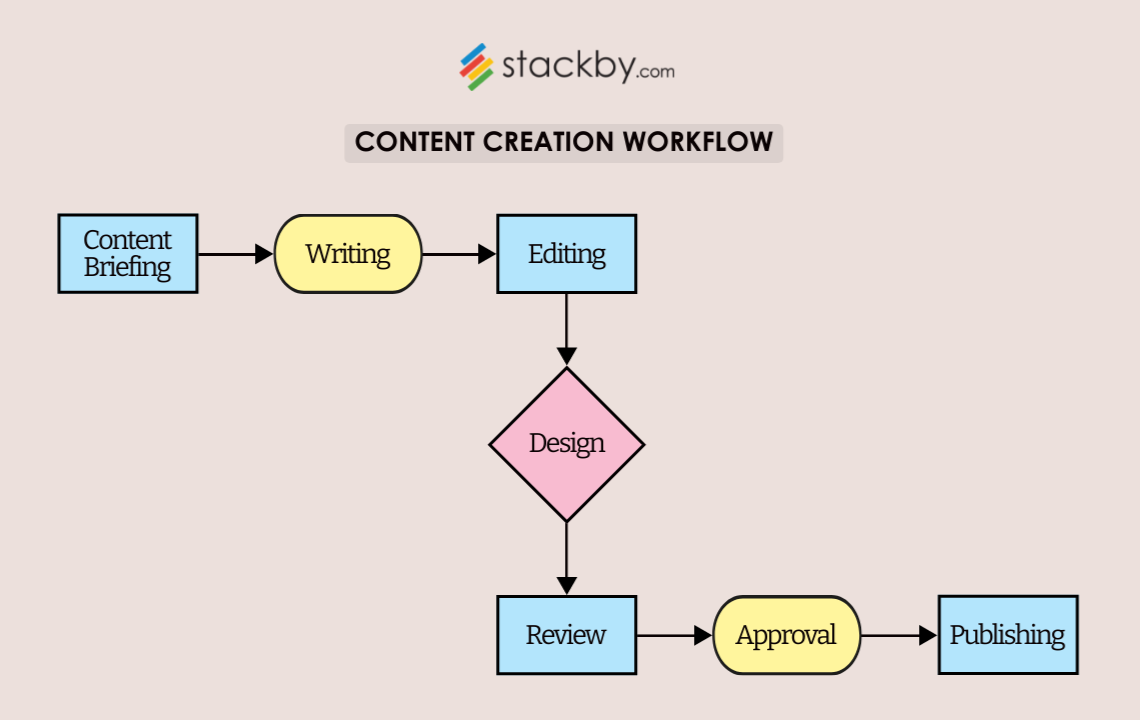
Basic Components of a Workflow
The basic components of a workflow encompass the fundamental elements that collectively define and guide the sequence of tasks, actions, and processes within an organization.
These components work together to ensure efficient task execution, collaboration, and successful completion of projects.
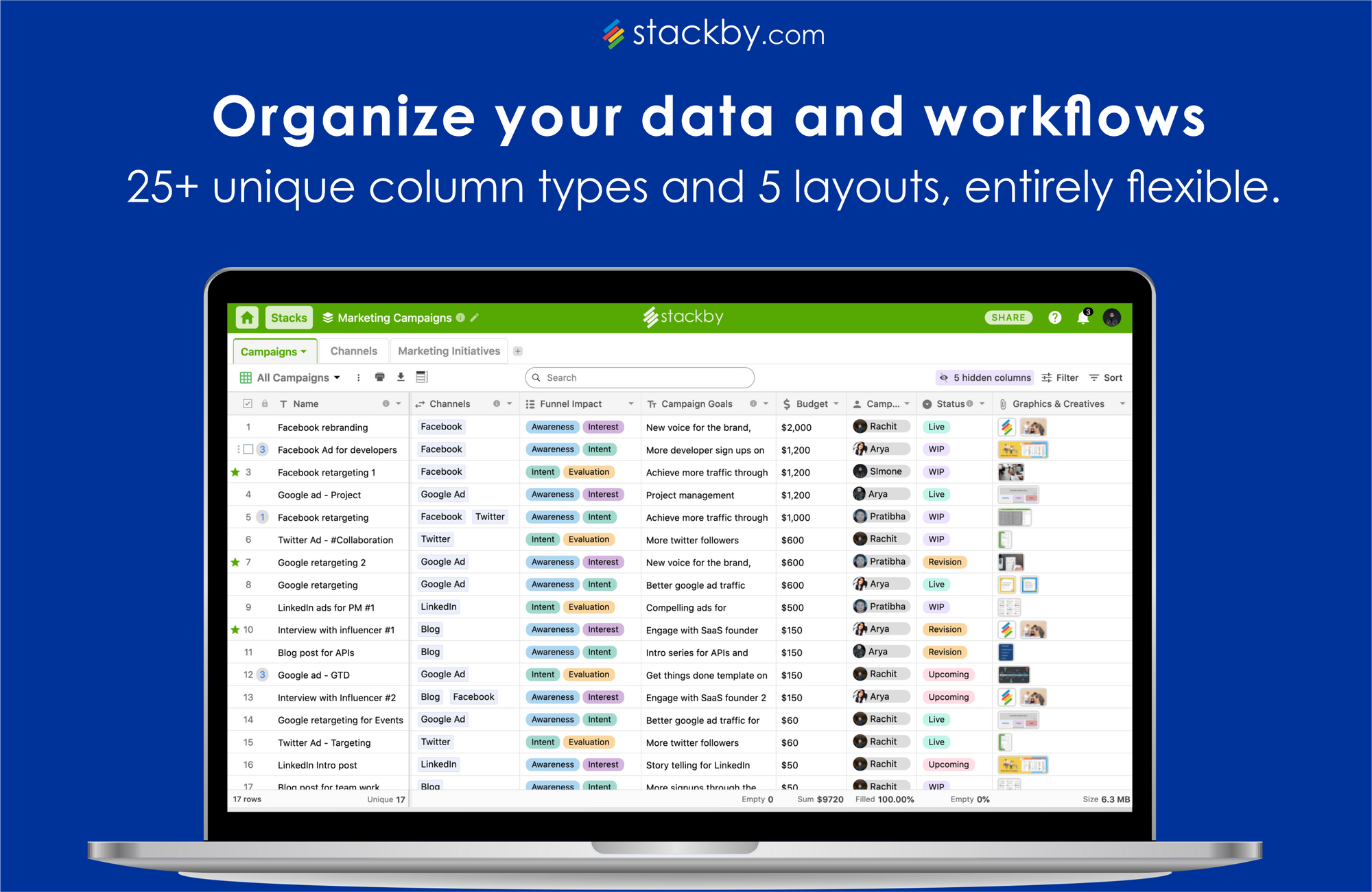
Here are the essential workflow components to know about:
- Tasks or Activities: These are the specific actions that must be performed within the workflow. Each task has a defined purpose, such as creating content, reviewing documents, or conducting research.
- Sequence or Order: Workflows follow a predefined sequence or order in which tasks are executed. This sequence ensures that tasks are performed logically and efficiently.
- Roles and Responsibilities: Every task or activity is assigned to a specific individual or role responsible for its execution. Clear role assignment ensures accountability and prevents confusion.
- Decision Points: Workflows often include decision points where choices must be made based on certain conditions or outcomes. Decisions guide the workflow down different paths depending on the situation.
- Transitions: Transitions indicate the movement from one task to another. They represent the triggers determining when a task is completed, and the next task can begin.
- Notifications and Communication: Effective communication is crucial in workflows. Notifications, emails, or alerts are sent to relevant stakeholders when specific tasks are completed, awaiting approval, or facing issues.
These components collectively define the structure and function of a workflow, ensuring that tasks are carried out systematically and organized. As a result, it ultimately leads to successful project outcomes.
Top 5 Workflow Management Software
1. Stackby
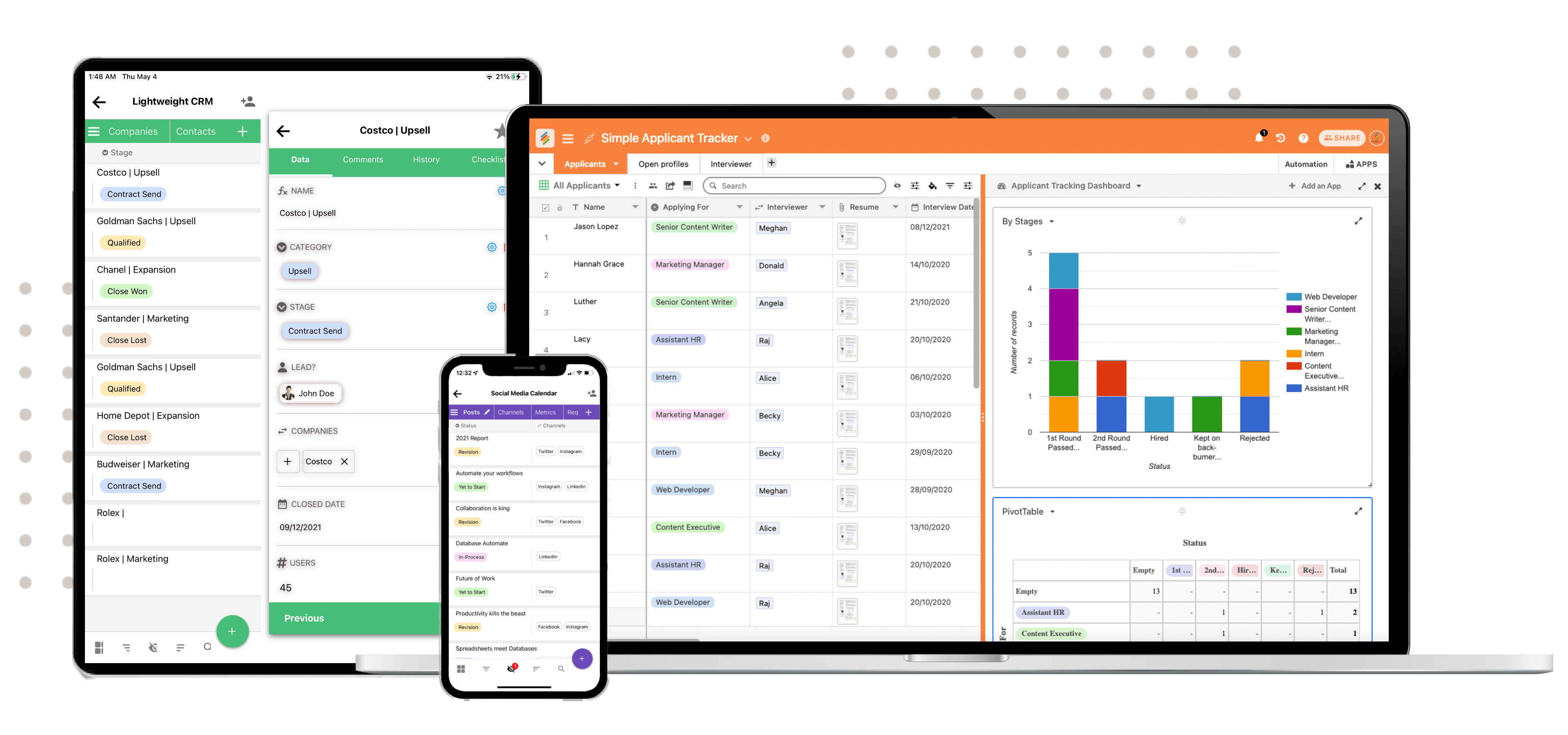
- Overview: Stackby is a versatile collaborative workspace that combines the functionalities of spreadsheets, databases, and automation.
It offers a unique approach to managing workflows by allowing users to create custom databases and collaborate on them. - Key Features: Stackby's flexible interface allows users to build custom workflows with rows, columns, and linking of data.
It offers integration with various apps and APIs, dynamic fields, and Page Designer for creating visually appealing templates. It is suitable for project management, CRM, marketing campaigns, and more. - Benefits: Stackby's unique database and spreadsheet hybrid structure enables users to design custom workflows tailored to their needs.
The platform's flexibility, automation options, and collaborative features make it suitable for various industries and use cases.
2. Kissflow

- Overview: Kissflow is a cloud-based workflow automation platform designed for process management and collaboration. It offers a no-code approach, allowing users to create workflows without technical expertise.
- Key Features: Kissflow offers pre-built templates for various HR, procurement, and IT processes. It includes visual workflow design, automation, real-time tracking, reporting, and integration with third-party tools.
- Benefits: Kissflow's simplicity and ease of use make it accessible for businesses of all sizes. Its no-code approach empowers non-technical users to design and manage workflows efficiently, making it suitable for HR, finance, and IT departments.
3. Smartsheet

- Overview: Smartsheet is a work execution platform that combines spreadsheet functionalities with project management tools. It is known for its collaborative features and project-planning capabilities.
- Key Features: Smartsheet offers grids for data entry, Gantt charts for project planning, collaboration tools, and automation options. It integrates with popular apps like Microsoft Office and Google Workspace.
- Benefits: Smartsheet's interface is familiar to spreadsheet users, making it easy to transition. It benefits project management, task tracking, and team collaboration.
4. Process Street
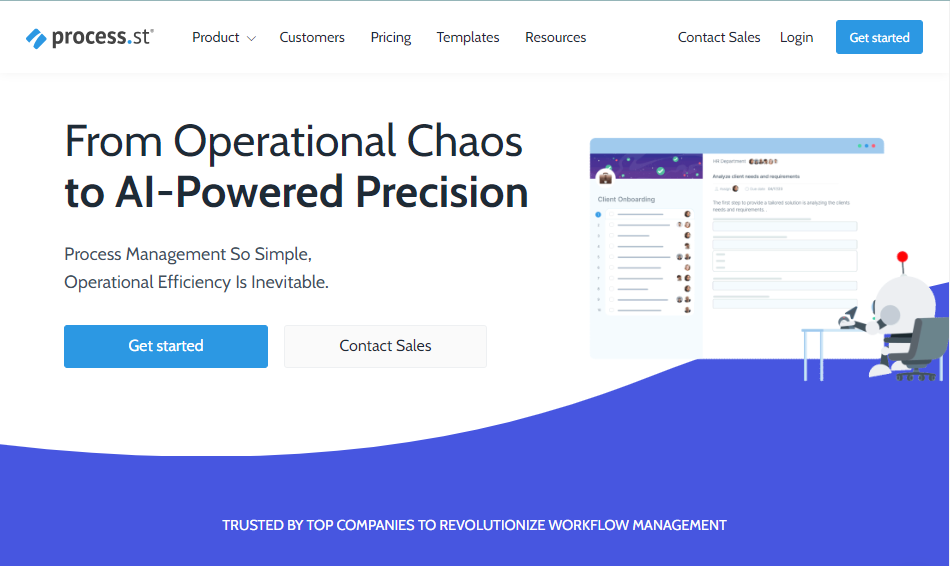
- Overview: Process Street is a checklist and workflow automation platform designed to streamline recurring tasks and processes. It's focused on providing a straightforward way to create and manage workflows.
- Key Features: Process Street offers pre-built checklist templates, workflow automation, role assignments, conditional logic, and integration options. It's suitable for creating and executing standardized processes.
- Benefits: Process Street excels at simplifying the creation and execution of checklists and standard operating procedures. It is beneficial for businesses that require repetitive tasks or process documentation.
5. Zapier

- Overview: Zapier is an integration platform that connects different apps to automate workflows. It allows users to create "Zaps," automated actions triggered by specific events in different apps.
- Key Features: Zapier offers a wide range of app integrations and the ability to create complex workflows by connecting different tools. Users can set up Zaps to automate tasks, data synchronization, notifications, and more.
- Benefits: Zapier is an excellent choice for businesses seeking to automate tasks and streamline processes by connecting various apps they already use. It eliminates the need for manual data transfer between apps, boosting efficiency.
Things to Look for in Workflow Management Software
Centralized Data
Centralizing data means having a unified location where all relevant information, documents, and data related to a workflow are stored. It ensures that team members have easy access to the most up-to-date and accurate information. It could be centralizing data from forms, other tools via Zapier, or similar.
This centralization streamlines communication, reduces duplication of efforts, and promotes data consistency.
Automation
Automations involve the ability to set up predefined rules or sequences that trigger specific actions or tasks based on certain events. This feature helps eliminate manual, repetitive tasks, reduce human error, and increase efficiency.
For instance, you can automate email notifications when a task is assigned or completed, or automatically move tasks to the next stage in a workflow. Or even set up email reminders on individual records.
Collaboration (Updates, Checklists, Comments, Sharing)
Collaboration features enable team members to work together effectively on tasks and projects.
- Updates: Real-time updates provide visibility into task progress, allowing team members to know the status of each task at any given moment.
- Checklists: Incorporating checklists within tasks ensures that all necessary steps are completed systematically.
- Comments: Comments enable team members to communicate, provide feedback, ask questions, and discuss tasks directly within the workflow.
- Ownership: Assigning ownership of tasks ensures clear responsibilities, reducing confusion and fostering accountability.
- Sharing: Share only views (with filtered rows) to respective team members to establish clear responsibilities.
Cross Teams Functionality
Cross-team functionality refers to the workflow management software's ability to accommodate workflows involving multiple teams or departments.
Different teams can collaborate on tasks that require expertise from various areas, ensuring a cohesive approach. This feature facilitates transparency and cooperation across the organization, allowing for the effective execution of complex projects.
Why Do You Need to Standardize Your Workflow?
Here are the key reasons why you need to focus on standardizing your workflow:
- Consistency: Ensure tasks are performed uniformly, reducing errors and ensuring reliable results.
- Efficiency: Streamline processes, eliminating unnecessary steps and improving overall productivity.
- Clarity: Clearly define roles and responsibilities, minimizing confusion and enhancing accountability.
- Onboarding: Facilitate the integration of new team members by providing structured processes to follow.
- Scalability: Enable smooth expansion as standardized processes adapt to increased workloads.
- Transparency: Gain visibility into tasks, aiding in monitoring progress and identifying bottlenecks.
- Compliance: Align with regulations and industry standards, ensuring adherence and avoiding penalties.
- Continuous Improvement: Establish a baseline for optimization by identifying areas for enhancement.
- Collaboration: Simplify teamwork as everyone follows the same set of structured procedures.
- Quality Assurance: Maintain a consistent level of quality in outputs and customer experiences.
- Adaptability: Enhance the organization's ability to navigate changes and challenges effectively.
7 Templates to Standardize Your Workflow
1. Applicant Tracking
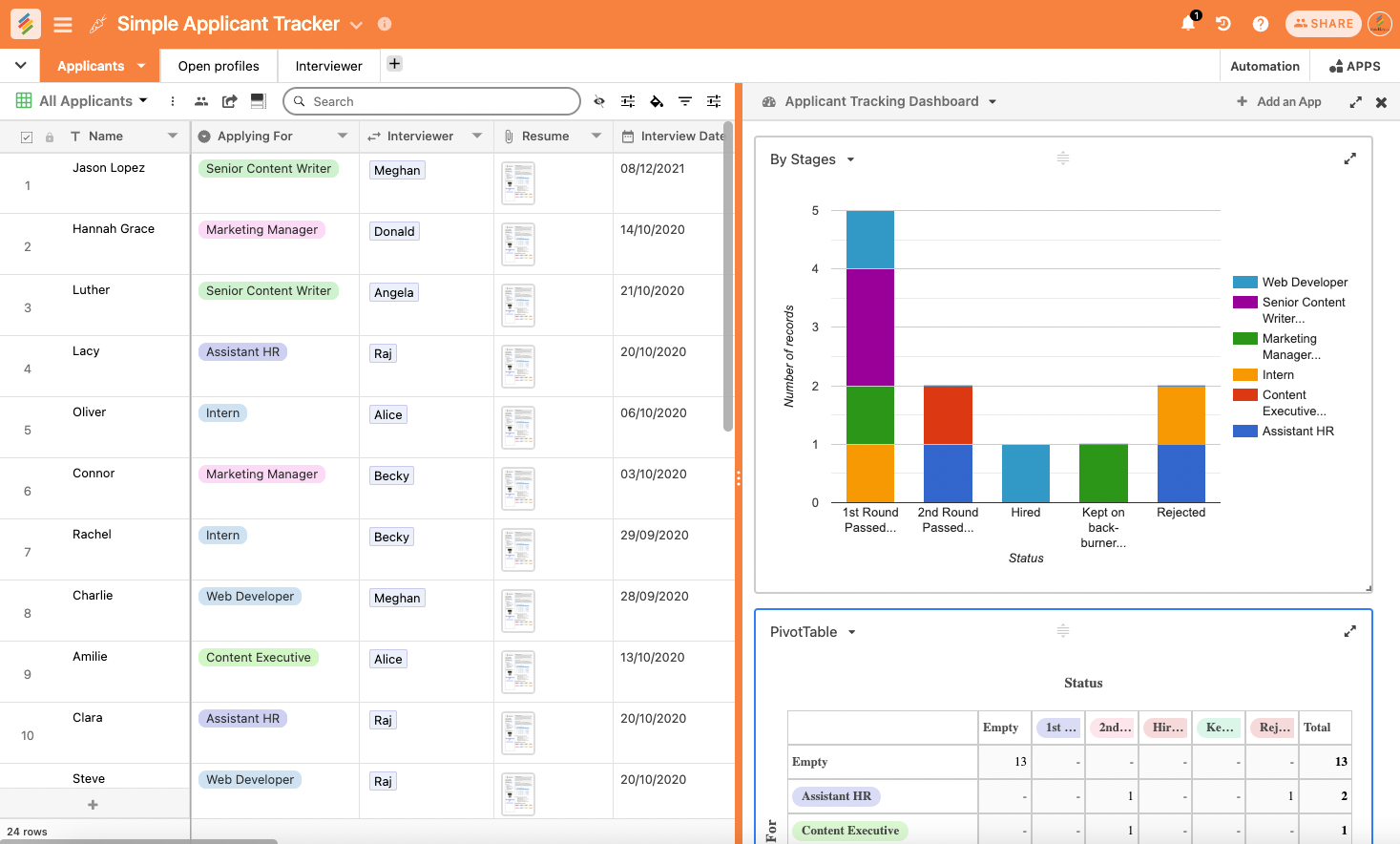
Streamline your hiring process from application to selection. This template helps you manage candidate details, interview schedules, feedback, and hiring decisions. It ensures a consistent evaluation process and smoother communication among the hiring team.
2. Employee Onboarding
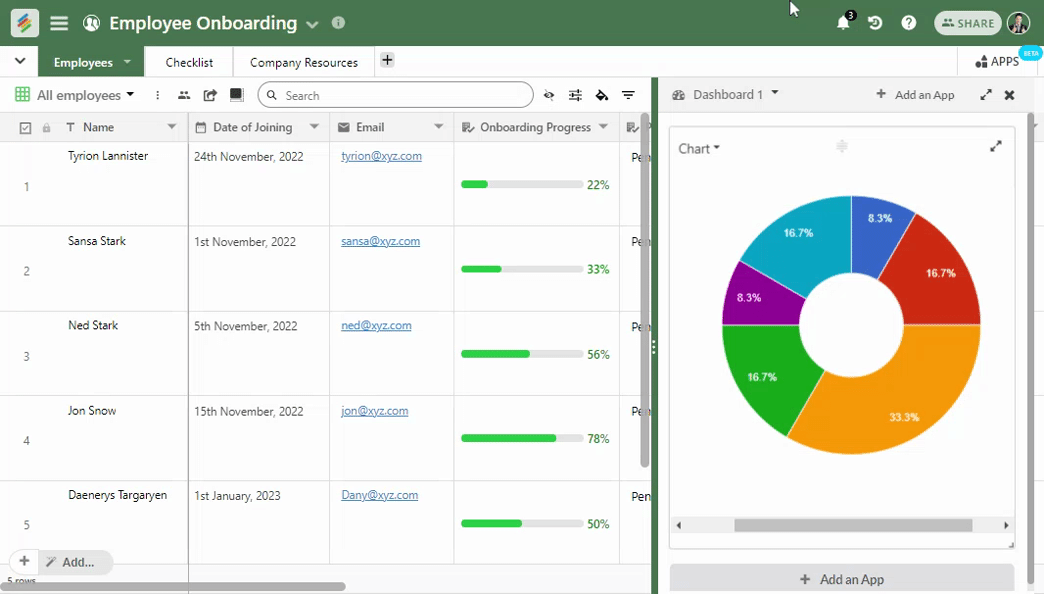
Simplify new hire integration with this template. It outlines tasks for paperwork completion, orientation, training, and introductions to team members. A structured onboarding process ensures a positive start for new employees.
3. Video Production
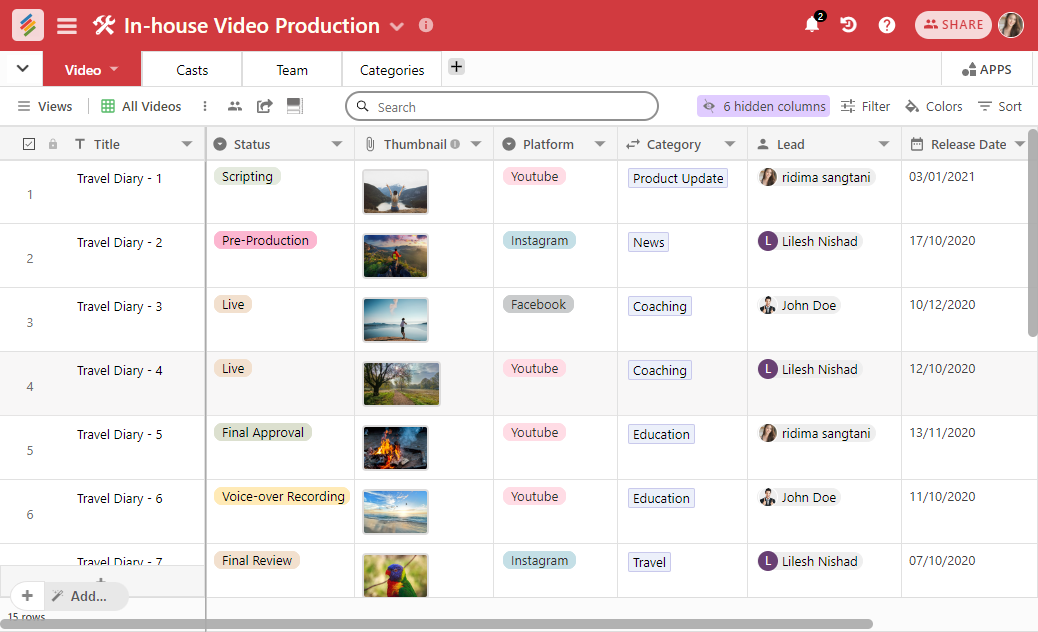
Manage video projects seamlessly, from concept to final product. This template defines stages for scripting, shooting, editing, and distribution. Assign tasks to videographers, editors, and reviewers to ensure a smooth creative process.
4. IT Requests or Bug Tracking
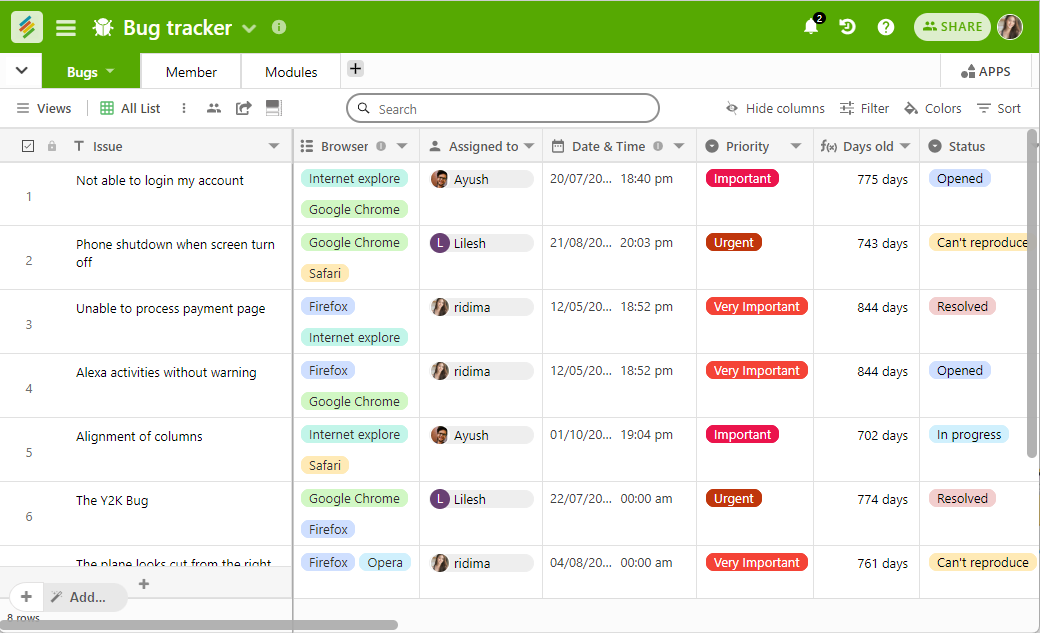
Standardize IT issue resolution with this template. Easily create tickets for reported issues, assign them to IT team members, track progress, and document solutions. Prioritize tasks and maintain clear communication.
5. Lead Management
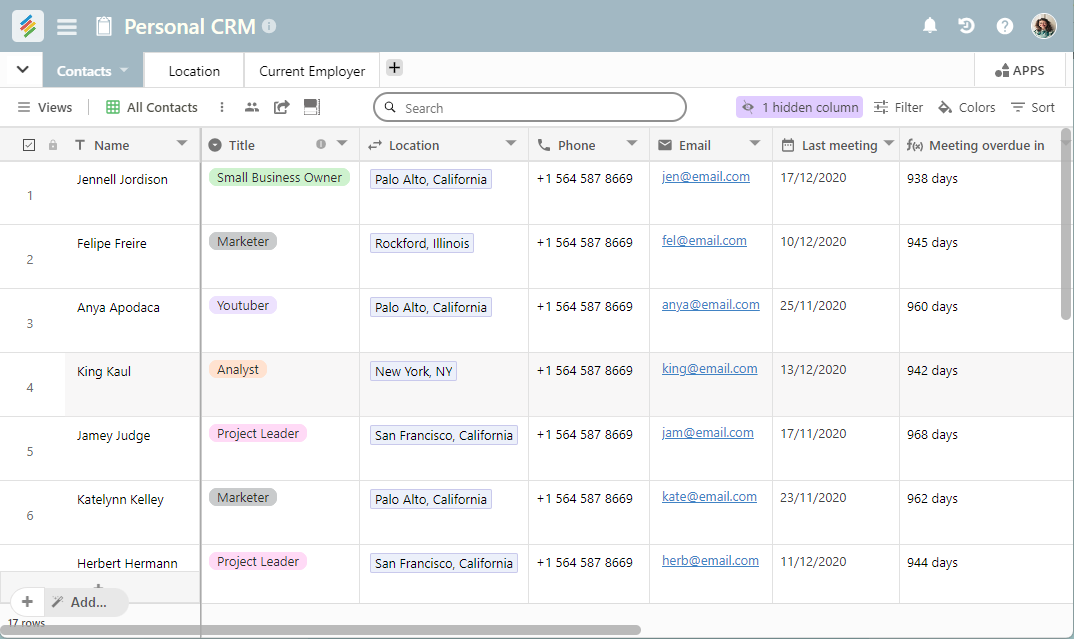
Organize sales leads and prospects systematically. This template helps track leads from initial contact to conversion. Assign follow-up tasks, record communication, and manage lead information effectively.
6. Order Management
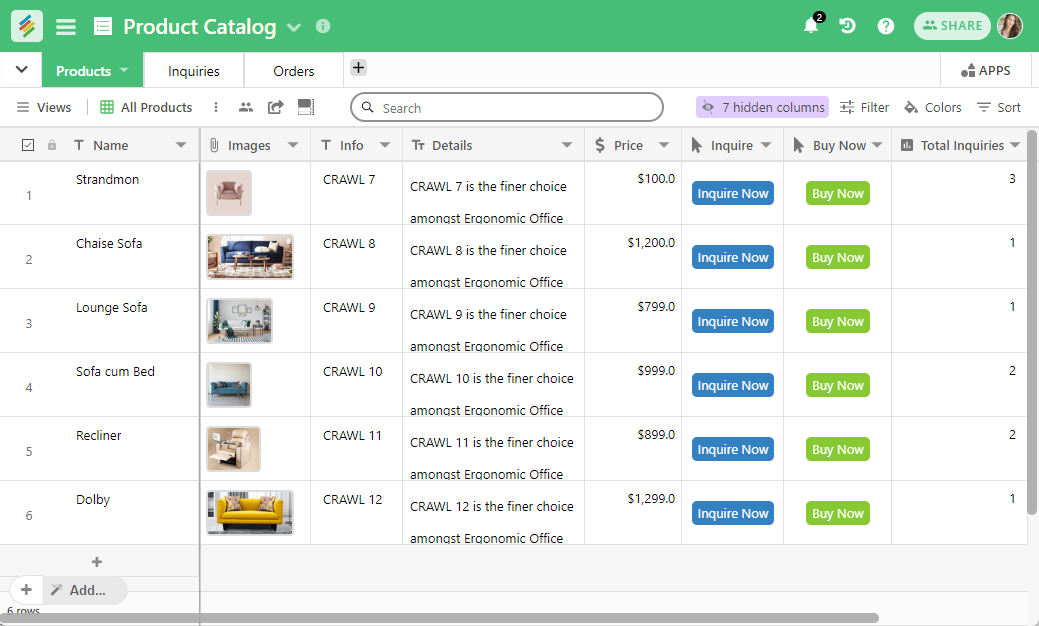
Streamline order processing and fulfilment. This template defines tasks for order placement, inventory updates, shipping, and customer notifications. Maintain accurate records and ensure timely deliveries.
7. Creative Design Management
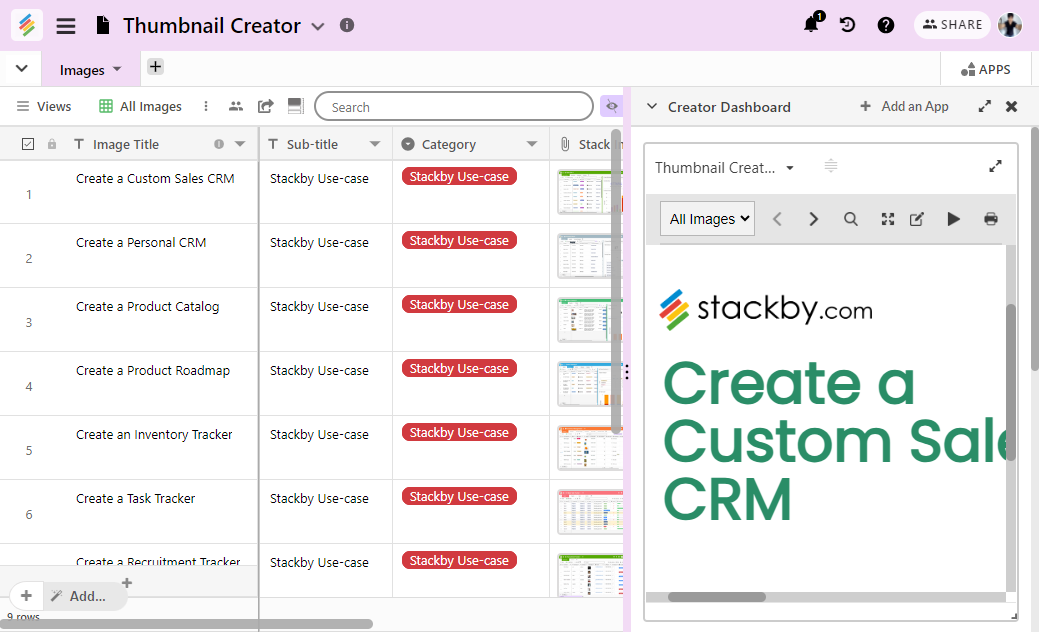
Enhance creative design projects with this template. It outlines stages for brainstorming, design creation, review, and approval. Assign tasks to designers, reviewers, and stakeholders to maintain consistent and efficient creative workflows.
Tips to Optimize Your Workflow
(i) Make sure the team is on the same page with proper roles and responsibilities
It is crucial for you to clearly define roles and responsibilities for each team member within the workflow. Avoid confusion by outlining who is responsible for what, ensuring tasks are completed efficiently, and no critical step is missed.
(ii) Create a Workflow Structure Upfront
You should effectively plan the entire workflow process before execution begins. Also, determine the sequence of tasks, dependencies, and potential bottlenecks to ensure a smooth and organized workflow.
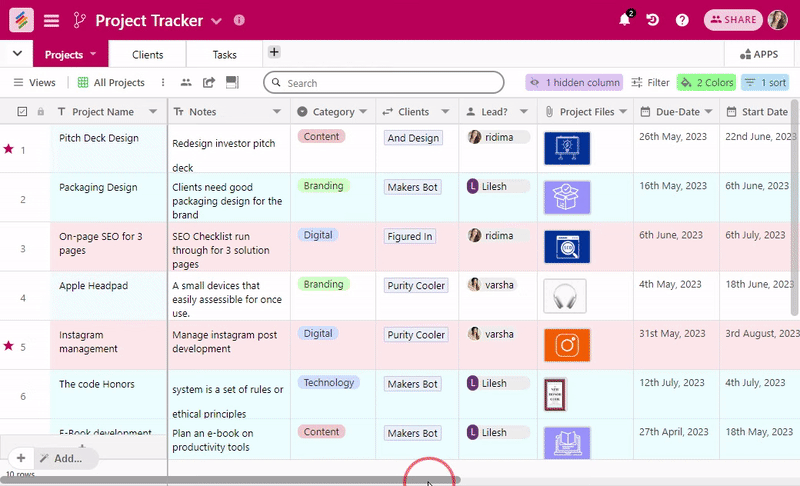
(iii) Automate Your Data
Make sure to utilize automation tools to eliminate manual, repetitive tasks. Additionally, automating data entry via forms or other tools, notifications, and reminders helps reduce human error and free up valuable time.
(iv) Keep track of your KPIs
Another important thing is to clearly define Key Performance Indicators (KPIs) that align with your workflow's objectives. Also, regularly track and analyze these metrics to measure progress and identify areas for improvement.
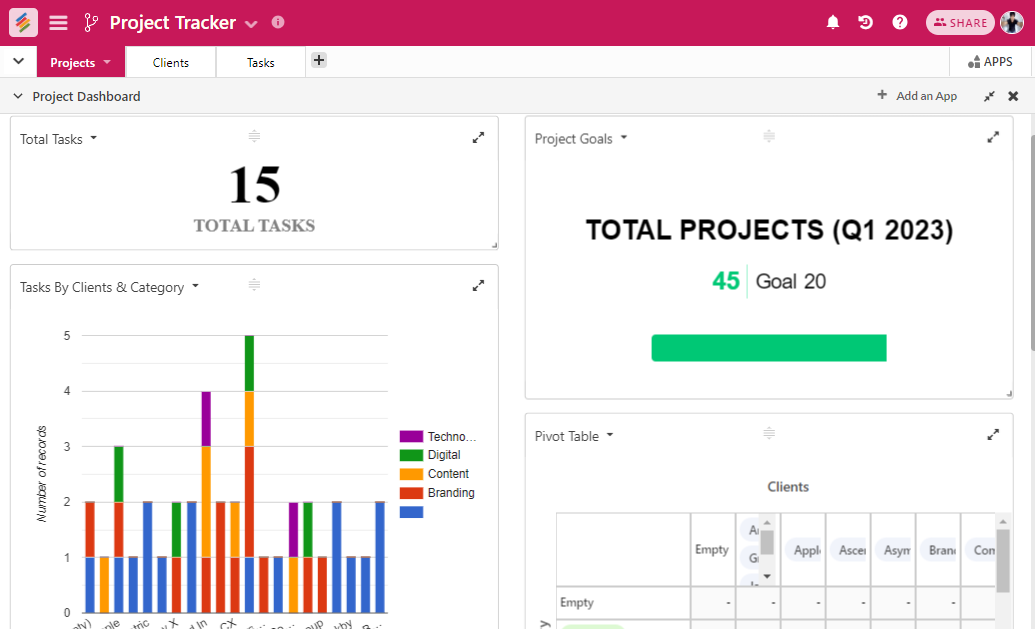
(v) Ensure proper communication amongst all
It would help if you focused on establishing effective communication channels among team members. Regularly update everyone on progress, changes, and challenges to maintain transparency and collaboration.
(vi) Create and reuse workflow templates
Designing templates for common workflows and processes is another essential tip to follow. Reusing templates saves time, ensures consistency, and reduces the need to start from scratch for recurring tasks.
So, by implementing these tips, you can enhance your workflow's efficiency, collaboration, and effectiveness. Ultimately, it leads to better outcomes for your projects and tasks.
Build Your First Workflow with Stackby Today
Stackby offers a dynamic and customizable platform for workflow management. You can create tables tailored to your needs, automate processes, collaborate in real-time, and integrate with other tools.
Here's how to build your first workflow using Stackby:
- Define Your Workflow: Identify the use-case, sequences, and roles involved.
- Create a Database: Add unique columns per your structure, import data from CSV, Excel or Google Sheets and assign statuses, timelines, owners, and dependencies.
- Automate: Set up automation for task assignments, notifications, and reminders. Bring data automatically via forms or other platforms via Zapier.
- Collaborate: Use comments, updates, and checklists for efficient collaboration.
- Visualize: Utilise views like Kanban, Gallery, or Calendar to visualize your workflow.
- Reporting: Create dashboards with charts, pivot tables, and more to analyze your data.
Check out our latest webinar to get started with Stackby from scratch:
Final Thoughts
Workflow management is a fundamental pillar of efficient operations. By understanding what workflow is, embracing workflow management software, and standardizing your processes, you will be well on your way to enhancing productivity and achieving better outcomes.
With templates to guide you and Stackby's versatile features at your disposal, you can confidently navigate the complexities of workflow management.
So, what are you waiting for? Sign up with Stackby for free and optimize your processes, boost collaboration, and build a foundation for success today!
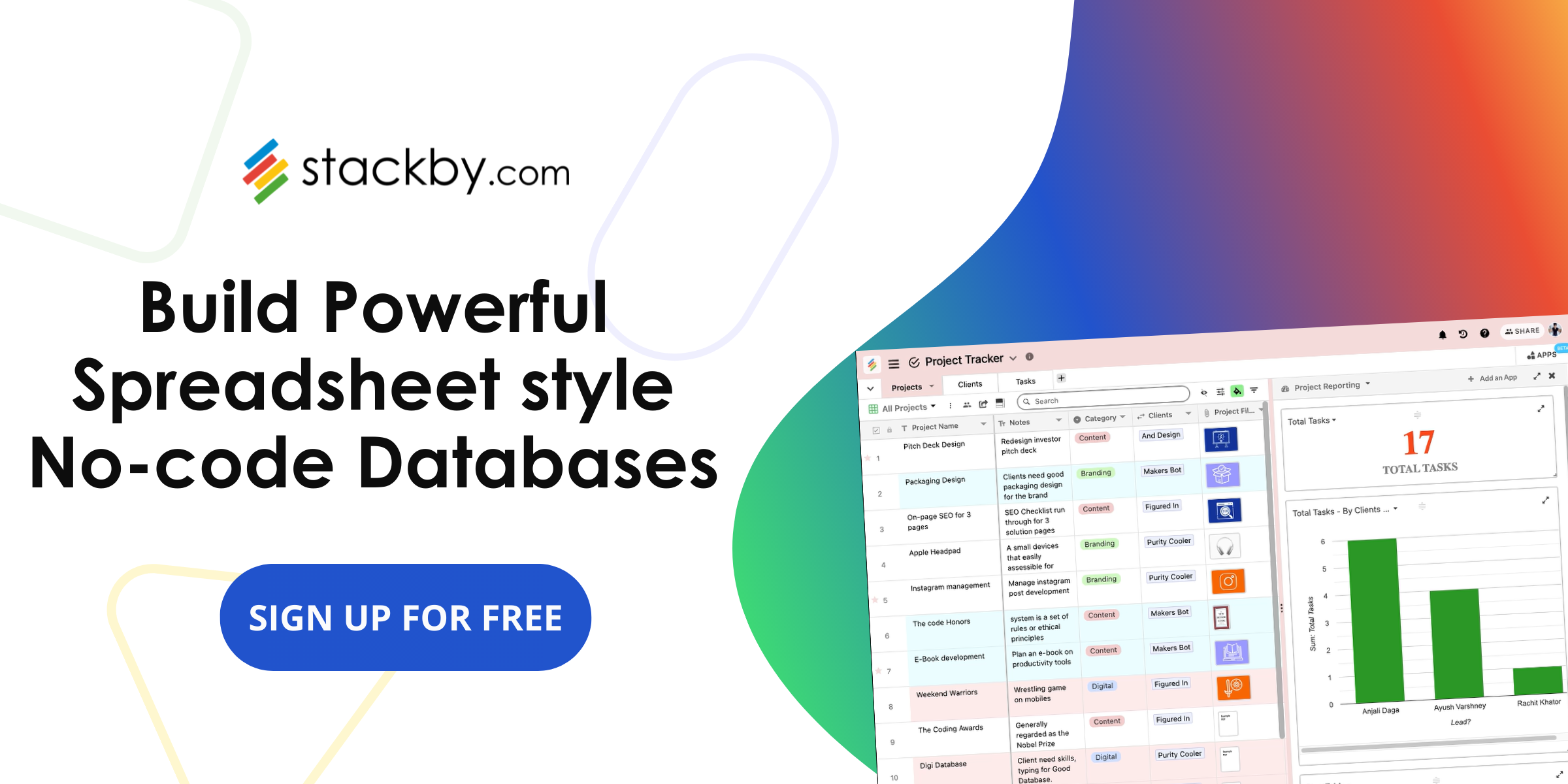


![Best 14 HR Database Software for Recruitment Agency [Free+Paid] [2025]](/blog/content/images/size/w960/2024/04/stackby--hr-database-software-blog-post-5.3.jpg)
![A Simple Guide on Workflow Management Software [Updated 2025]](/blog/content/images/size/w960/2021/12/work-management-blog.png)

